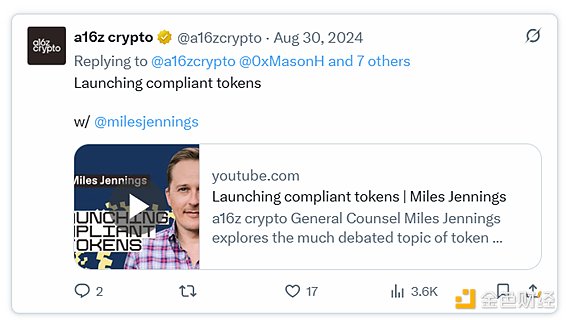How to deal with encryption VC in the industry entering a mature stage

Reprinted from jinse
04/16/2025·4DAuthor: Sam Lehman, investor at Symbolic Capital; Translation: Golden Finance xiaozou
In the past few months, I have witnessed first-hand the four well-known crypto funds either switched to pure liquidity management or quietly shut down. Many front-line institutions are struggling to raise funds. Many investors I know have completely left the market - some have switched to the AI track, and some have retired directly (not just because they have earned enough pensions with AI meme coins). This is by no means accidental, but the underlying logic of the industry is undergoing qualitative changes.
I think the crypto world is bidding farewell to the wild and unruly period of innocence and entering a steady and mature period. The early chaos of short- termism, speculation and VC arbitrage was giving way to a more mature and more organized new era. This transformation process will have many far-reaching impacts, and sadly, most Web3 venture capital institutions are not ready for it.
Venture capitalists always like to talk about the importance of "adaptation" to entrepreneurs. Now, it's their turn to make changes.

Here are my thoughts on industry transformation: Why are traditional crypto venture capital strategies ineffective? How will the new paradigm rise? Which investors can stand out in the next stage.
1. Traditional Web3 venture capital model
The crypto venture capital model in the past basically follows this routine:
• Find projects about one year after token issuance and need to have a way to get to the top CEX (there was a fund raising fund that focused on the selling point of "the management team comes from top exchanges", and its so-called value-added service is to smell which projects can be listed in advance. If there is still a fund promotion rhetoric, don't believe it...)
• Invest through the SAFT agreement (advised by the way)
• Selling to retail investors immediately after project token generation (TGE)
- the lock-up rules at that time were much looser than today's standard "1-year lock-up period + 3-year linear release". During the bull market cycle, retail investors always have a gluttonous appetite for the Nth VC currency.
This gameplay condones a lot of bad behavior: First, many VCs raise 5-year funds—just half of the regular term of Web2 funds. This structure is destined to be unable to support long-term builders. When the fund lasts only 5 years, how can it be possible to invest in projects that require a 10-year development path? On the other hand, founders who receive such funds are forced to accelerate liquidity within a limited timetable, and often the products are issuing coins in a hurry before they have verified the market fit (PMF).
Thankfully, this pattern is rapidly dying. In 2025, we have seen an increasingly mature market with gradually clear supervision and re-entering traditional financial institutions, and the industry focus has shifted to fundamentals, real utility and sustainable business models.
2. The appearance of growth
The future crypto industry will require investors and entrepreneurs to have stronger patience. Market maturity will bring about the following significant changes:
• Longer lock-up period: Most CEXs adopt the new standard of "1-year lock- up + 2-3-year linear release".
• Fundamental priority: The overflow of altcoins and the specialization of retail investors force projects to break through with quality factors such as real income, moats and profit paths.
• Diverable exit path: crypto companies have improved their feasibility of IPOs, and more mergers and acquisitions can have substantial impacts, providing new liquidity channels independent of token issuance.
I dare say that most Web3 venture capital institutions have difficulty adapting to the new normal. From my observation, institutions that realize this are either leaving the market or turning to liquidity investments, or raising structured funds that adapt to the new rules. And institutions that can always support the new model will usher in a golden age.
3. Winners in the Change
Note: The new pattern means huge opportunities for many funds. Nowadays, comprehensive institutions that can support the full cycle of "seed turn IPO" will occupy the blue ocean exclusively - currently, there are no more than 10 crypto funds that can lead round A and above financing. More importantly, there are very few institutions with the ability to guide IPOs: How many funds attach importance to (and implement) formal corporate governance? Familiar with roadshow processes and investor relations? I'm afraid there are only a handful of... But for those funds that have always adhered to high standards and systematic operations, now is the magical moment for investment.
The role of early investors is also evolving. In the past, seed round investors could cash out before the product was formed by assisting in community construction and seizing their mental share. Now they must deeply participate in basic work such as product market matching and user research, rather than urging project parties to issue coins to cash out.

It is worth mentioning that in 2023, Miles Jennings, general counsel of a16z crypto, called for "find PMF first and then issue coins", and this view caused controversy at that time. Fortunately, with the increase in fundamentals, the industry is returning to rationality, which will give birth to more companies that work hard (Note: The current experiment on "micro-scale coin issuance" is worth paying attention to. This model allows the team to only raise necessary development funds, and its feasibility remains to be seen).
4. Embrace maturity
The maturity of the crypto industry is by no means a bad thing, but a necessary path for technology to move towards mainstream applications. The projects currently built are more realistic, focus more on real problems, and are more likely to create lasting value than before.
For venture capital institutions, this is both a challenge and an opportunity. Institutions that can adjust their strategies to adapt to long cycles, focus on fundamentals rather than hype, and provide truly value-added services will flourish. Players who stick to the old routine will eventually be abandoned by entrepreneurs who choose the new paradigm foundation.
The crypto industry is growing. The question is: Can venture capitalists grow simultaneously?

 chaincatcher
chaincatcher
 panewslab
panewslab